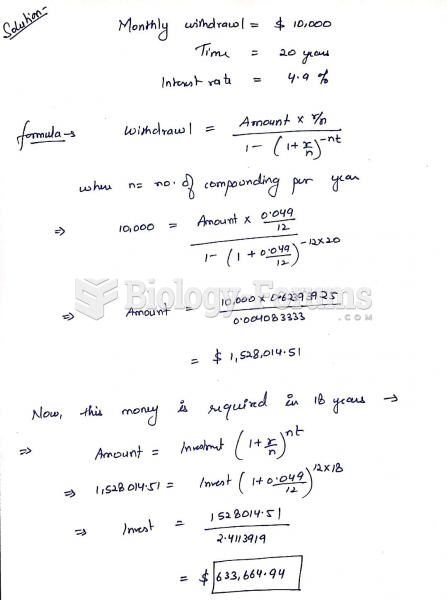Answer to Question 1
ANS: B
A. Incorrect response: Pressure support ventilation involves the delivery of some level of pressure to be delivered during each spontaneous breath to overcome the work of breathing imposed on the patient by an artificial airway. Pressure support ventilation (PSV) differs from pressure-controlled ventilation (PCV) in that PSV is used only for patients who are breathing spontaneously, whereas PCV is for breaths that are patient triggered (pressure or flow) or time triggered. With PCV, the pressure remains constant throughout inspiration, and the pressure is unaffected by changes in lung compliance and airway resistance.
B. Correct response: With pressure control ventilation (PCV), the peak inspiratory pressure, mandatory rate, inspiratory time, or I:E ratio are set. An advantage of PCV is that alveolar pressure cannot exceed the set pressure. One of the goals of PCV is to avoid permitting the PIP from exceeding 30 cm H2O, thus minimizing the potential for alveolar overdistention. Inspiratory time is set during PCV. The mandatory rate is set during PCV.
C. Incorrect response: See explanation B.
D. Incorrect response: See explanation B.
Answer to Question 2
ANS: C
A. Incorrect response: PC-CMV is classified as pressure controlled; time triggered; pressure limited; and time cycled.
B. Incorrect response: CMV is classified as pressure or volume controlled; time or patient triggered; flow or volume limited; and time, flow, pressure, or volume cycled.
C. Correct response: CPAP is a spontaneous ventilatory mode characterized as pressure controlled; pressure, flow, or volume triggered; pressure limited; and pressure cycled. CPAP can also be classified as pressure controlled; patient triggered; pressure limited; and pressure cycled.
D. Incorrect response: Pressure support ventilation (PSV) is pressure controlled; patient triggered; pressure limited; and flow cycled.
Note that the term patient refers to the fact that the patient's effort is responsible for triggering inspiration if the trigger variable is either pressure, flow, or volume.





